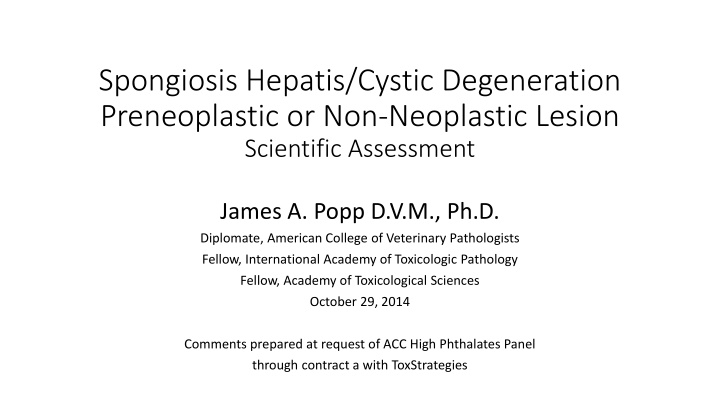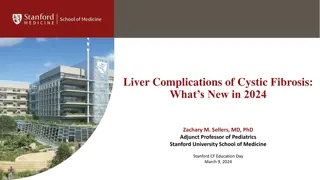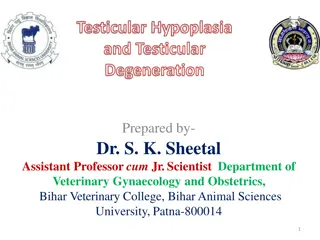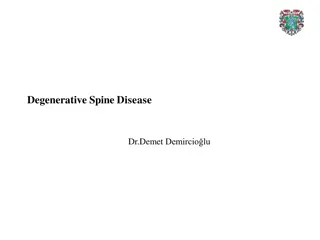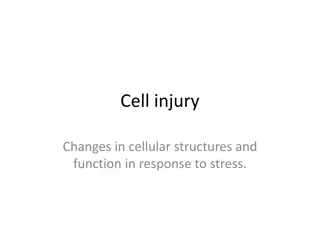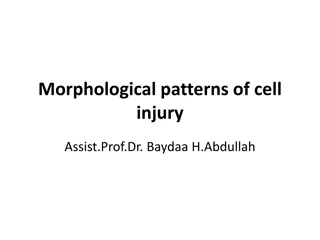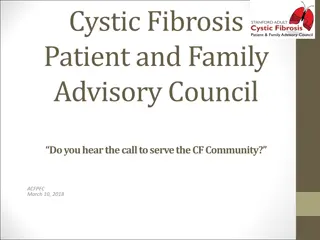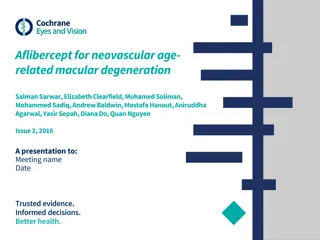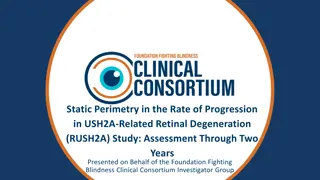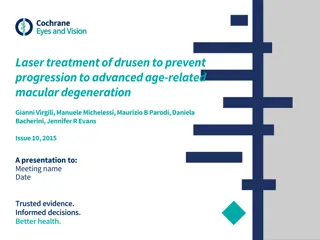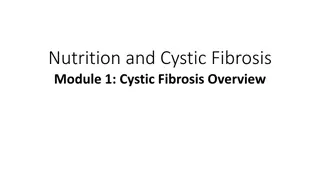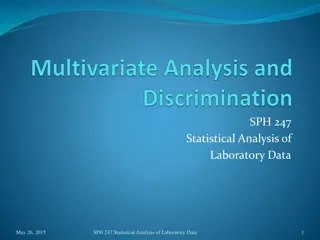Spongiosis Hepatis/Cystic Degeneration Assessment
Scientific evaluation by James A. Popp, D.V.M., Ph.D., on the biological characteristics and potential implications of spongiosis hepatis/cystic degeneration as a non-neoplastic lesion in rodents, discussing the lack of evidence supporting its reclassification to preneoplasia or neoplasia and its absence in human liver, concluding that it is not a risk factor for human cancer.
Uploaded on Apr 19, 2025 | 1 Views
Download Presentation

Please find below an Image/Link to download the presentation.
The content on the website is provided AS IS for your information and personal use only. It may not be sold, licensed, or shared on other websites without obtaining consent from the author.If you encounter any issues during the download, it is possible that the publisher has removed the file from their server.
You are allowed to download the files provided on this website for personal or commercial use, subject to the condition that they are used lawfully. All files are the property of their respective owners.
The content on the website is provided AS IS for your information and personal use only. It may not be sold, licensed, or shared on other websites without obtaining consent from the author.
E N D
Presentation Transcript
Spongiosis Hepatis/Cystic Degeneration Preneoplastic or Non-Neoplastic Lesion Scientific Assessment James A. Popp D.V.M., Ph.D. Diplomate, American College of Veterinary Pathologists Fellow, International Academy of Toxicologic Pathology Fellow, Academy of Toxicological Sciences October 29, 2014 Comments prepared at request of ACC High Phthalates Panel through contract a with ToxStrategies
Biological Characteristics and Potential Spongiosis Hepatis / Cystic Degeneration In 1980s, lesion was considered to be not Neoplastic Preneoplastic In 1990s, lesions previously termed spongiosis hepatis were interpreted as spongiotic pericytoma by one experimental group that studied the genotoxic agent N-nitrosomorpholine (NNM) (American Journal of Pathology 146:903-913, 1995) However, multiple limitations of this publication as addressed in written statement
Biological Characteristics and Potential Lack of Corroborating Data to Redefine Spongiosis Hepatis to Neoplasia or Preneoplasia A lesion progressing from spongiosis hepatis to clear neoplasia has apparently never been noted by practicing toxicologic pathologist. No primary publication describing a rodent neoplasm that had histological characteristics to support origin from spongiosis hepatis A lesion progressing from spongiosis hepatis to clear neoplasia was not described in recent compendium of rodent liver lesions (Toxicologic Pathology 38:5S-81S, 2010) Tumors arising from liver pericytes (Ito cell tumors) have been recognized but are morphologically different than spongiosis hepatis
Implications of Rodent Spongiosis Hepatis Determining Human Cancer Risk Spongiosis hepatis has not been described in human liver Reduces concern that increased incidence of spongiosis hepatis in treated compared to control rats is an indicator of human risk Spongiotic pericytoma in human has been described in a single published report based on recent literature search Histology of this lesion is substantially different than spongiosis hepatis in rats Lesion in human is therefore not a counterpart to the spongosis hepatis lesion in rats.
Conclusion of Scientific Assessment Spongiosis hepatis / cystic degeneration: Is a non-neoplastic lesion Is NOT a preneoplastic lesion Spongiois hepatis in the rat is not an indication of human cancer risk
